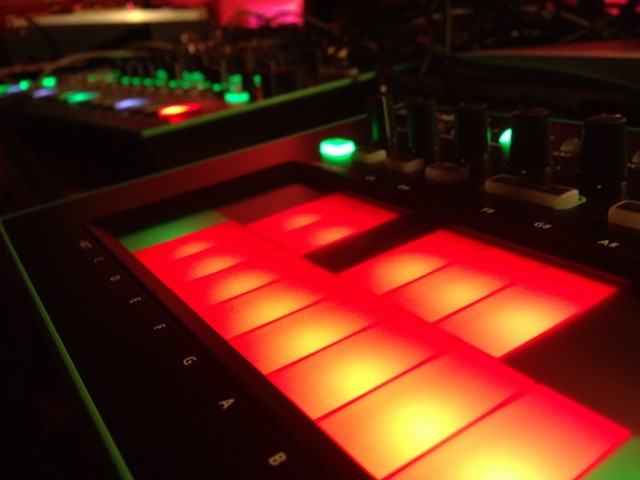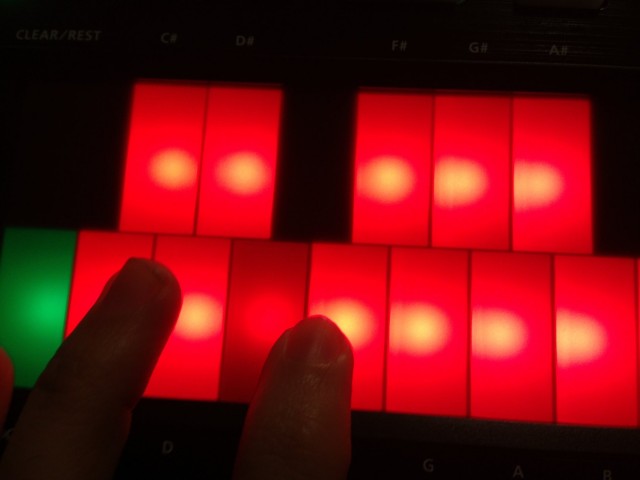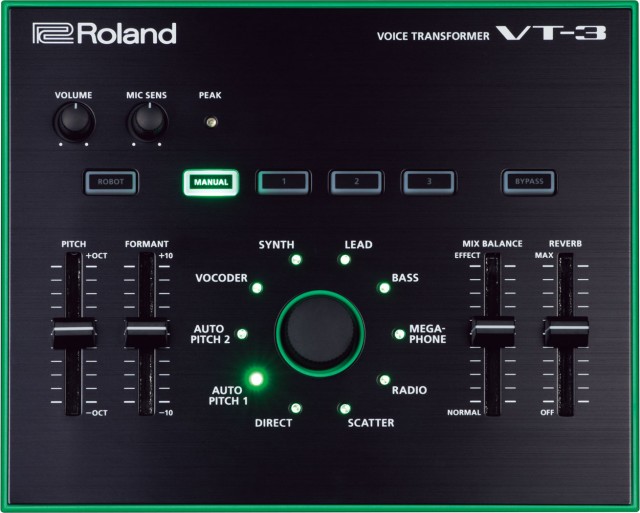It’s probably the greeting I’ve heard most in the past couple of months, apart from “Hello.”
Sometimes even before “Hello.”
Everywhere I go, people are asking me what I think of the Roland AIRAs – particularly the TR-8 drum machine.
There are now reviews everywhere of the AIRA TB-3 and TR-8 (and some of the VT-3, as well). For CDM, we’re planning some additional detail, but we’re still awaiting our review hardware. Fortunately, I got to spend an action-packed day with the trio of AIRAs with Benjamin Weiss.
So, I can do what I’d do in a bar: I can tell you all the really important details and skip straight to what I think of these (at least while we wait to do more exhaustive, detailed coverage).
Benjamin and I even finished an all-AIRA track for our NERKKIRN project. Well, nearly all-AIRA – the sound sources are exclusively AIRA TB-3, TR-8, and VT-3 with my voice. Here’s what sounds came out (teaser):
Having a day to mess with these is actually rather a great way to test the gear. You’re left with a fairly immediate impression.
The TR-8 is a killer live machine, and all about hands-on control. Does it sound like a 909 or 808? Absolutely. It’s not a perfect replica of a vintage machine, in part because individual vintage gear will differ and age. But it’s certainly darned close, and a terrific value for money. There’s a reason people are talking about getting rid of their original and replacing it with this. I doubt anyone would fault the sound; mostly what you lose is the appearance of the originals (and the accompanying street cred).
I’m not convinced that getting into the discussion of realism is really the point, though. In fact, more likely the reason not to buy a TR-8 is that you may be bored with the sound of an 808 and 909. Assuming you do want those sounds, though, this is an ideal way to get it, precisely because it’s hands-on. Sure, you could use a sample library and there are even nice drum controllers out there. But those options likely won’t give you perfect one-to-one parameter control – or faders.
And that’s why I say, I think the TR-8 is a live machine. It’s reasonably mobile, about the size of a laptop. And since it can double as an audio interface and MIDI interface, you can drop one piece of gear from your bag.
That’s not to say it isn’t also a nice studio machine (see the video below, via Synthtopia). But I think in the studio, it’s “nice to have” – in live use, for those who rely heavily on 808/909 sounds, it becomes a must-have. You just might want to think about adding an external effects box, and see the workaround for the absence of some internal recording features.
Unboxing and details on integrating with a DAW (as we finished a track in an afternoon, yes, they do work as studio boxes):
And for sound samples, we turn again to Benjamin and De:bug. First, the raw sound of the TR-8. I’m surprised some people were unimpressed with these sounds, but I think that’s for two reasons: one, it isn’t a blind test if you have a listen, and two, it is uncommonly dry. Remember, most people wouldn’t use an 808 or 909 entirely dry, either.
The effects section I think is not the strongest part of the TR-8, but the reverb and delay definitely get the job done. Here’s the reverb, delay, Scatter, and otherwise a raw recording:
The TB-3 is like getting a sequencer – with a free bassline, built in. If the TR-8 is great because it has lots of physical controls for its parameters, the TB-3 is sort of the opposite. It’s basically a preset machine. Dial in sounds, and see what you get. Of course, you can still access most of the sounds you’d produce anyway, but normally I advocate synth hardware precisely for its hands-on controls. Even the effects on the TB-3 are preset-specific: sometimes Scatter is a glitch, sometimes a delay, sometimes a reverb.
But then you add the touchscreen. The TB-3 is a bit like the KAOSS Pad sequencer KORG never made. Sequencing is wildly intuitive and loads of fun. Then, you can switch the X/Y pad to performance mode and use it to modulate effects. Best of all, this all works with external gear. SLIDE/TIE doesn’t transmit MIDI, unfortunately, and can’t be recorded live, only in step mode. But this is still a flexible touch sequencer at a price where there just isn’t much competition. It’s a bit like getting the synth for free.
I have to admit, with my own money, I’d buy a TB-3 first. And oh, yeah, this combo is really a lot of fun.
The VT-3 is sort of the odd man out. The artist Mijk van Dijk, who was a heavy user of all the original Roland gear, tells me he really likes this box, and he bought it with the other two. For him, it seems to bring fond memories of the VT-1. I just found the box limiting: you have fixed presets, and I can’t say I was a fan of them. Basic formant and auto-pitch work well enough, and you might use the synth parts, but why not add useful effects? Why are the controls so limited? Why are all but a few of the presets unusable novelties and throwaways?
I’d wait on this one and hope the AIRA adds an effect more worthy of the other two units. (A Space Designer was seen on the test bench in early AIRA promo videos, for instance, so Roland could have – and hopefully yet will – go another direction.) Or, frankly, right now, I’d buy a BOSS – you know, from Roland.
Bottom line: They’re really nice boxes. Talking about authenticity is a waste of time; they sound great. It’s really more whether you want 808/909 sounds (or whatever might be added via firmware) for the TR-8. On the TB-3, the sequencer plus some nice 303 sounds make for a wonderful buy, and I’m surprised that hasn’t gotten more attention. The VT-3 will probably work for someone, but to me it doesn’t live up to the Roland and BOSS names, so I’m hoping we see another effect in the lineup soon.
It’s been fun to watch people use these live over the past weeks, too; from Roland demos to artists getting them in-hand. Hardware endures because it’s really fun to play things with these kinds of controls.
We’ll revisit this in greater detail once we see the hardware; I hope we can use the extra time we’ve had to go into more specifics of functionality than some of the earlier reviews may have been able to do. And Roland has promised us a review unit of the System-1 synth. It’s still not entirely complete, which means any “reviews” you’ve seen were based on unfinished hardware. Having had a play at Musikmesse, I can at least say the existing synth model on there is something new. It’s beautifully compact, though the omission of velocity sensitivity from the keyboard is puzzling (if historically accurate). It’s really the details of the “Plug-Out” SH-101 model that may be most interesting, and that we haven’t heard yet. Stay tuned.
https://www.rolandus.com/go/aira/


